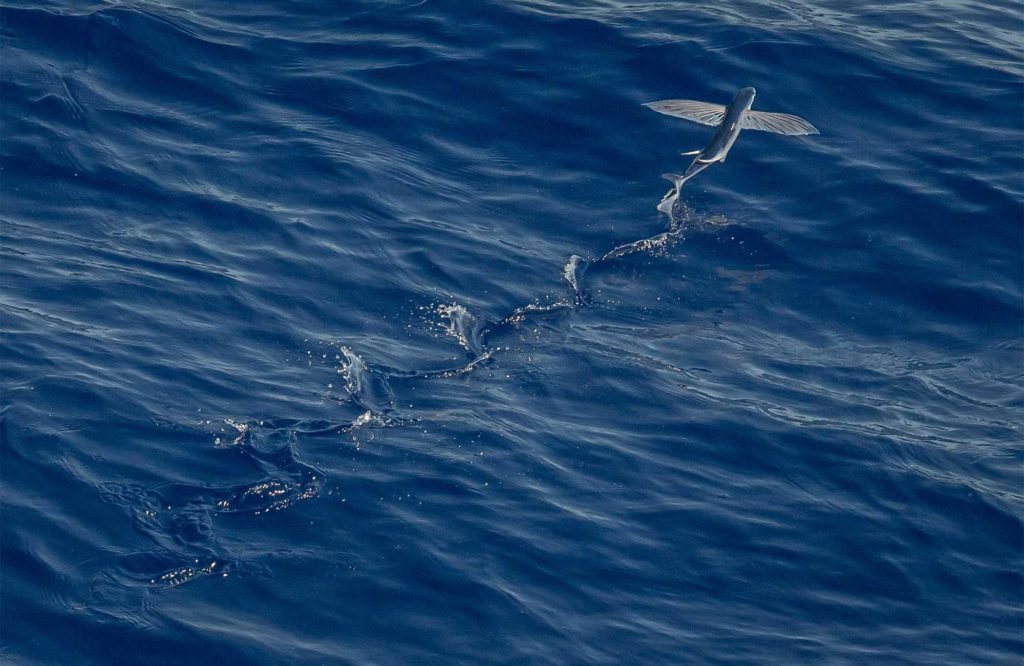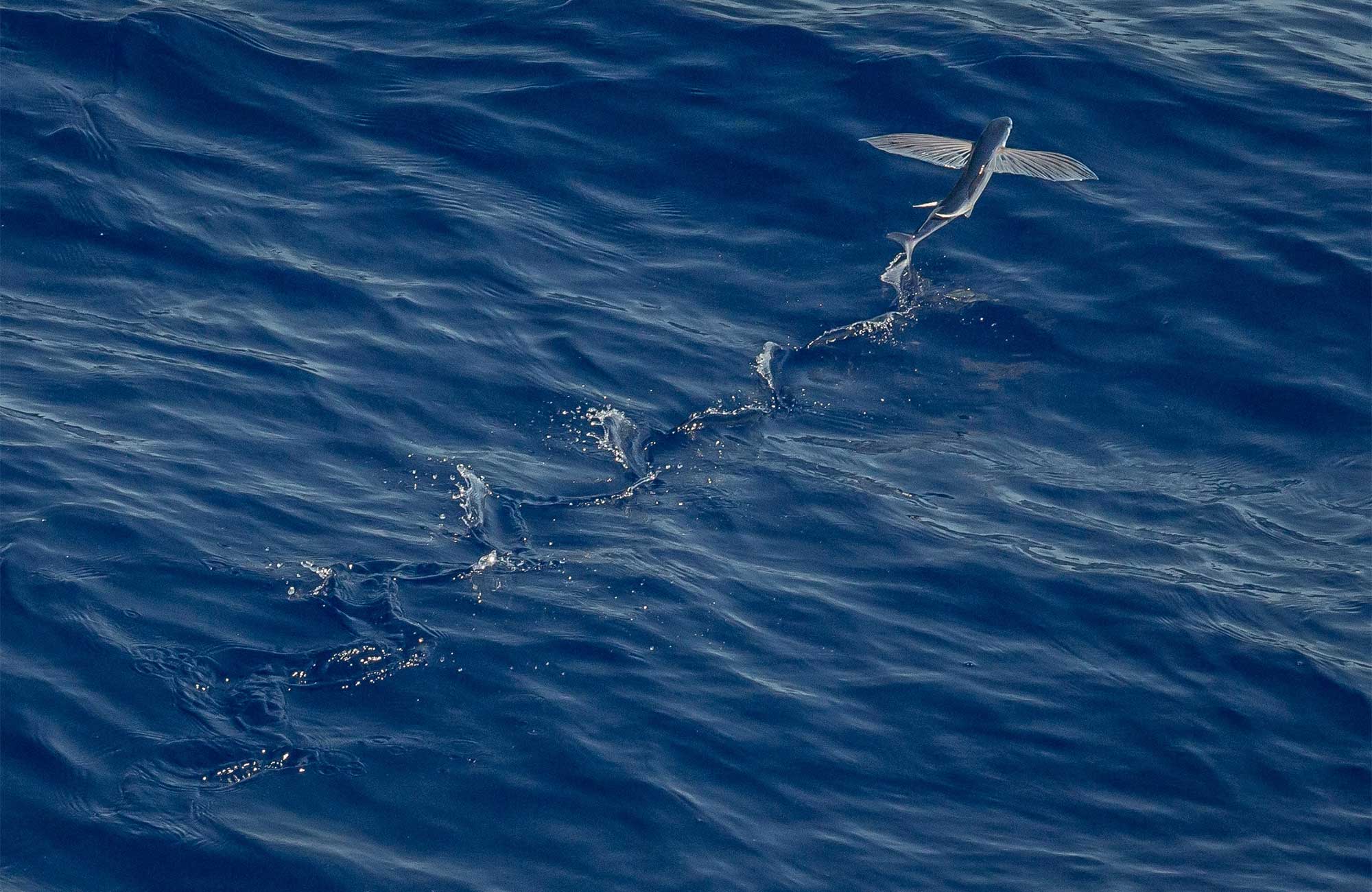The Characteristics and Evolution of the only avian sea creature
On the surfaces of warm ocean waters worldwide, flying fish are leaping into the air. The flying fish is a tropical and temperate marine species that inhabits areas off the Atlantic and Pacific coasts of the U.S.. The species also inhabits the open waters and coral reefs of the Atlantic, Pacific, and Indian Oceans (5). Flying fish are ray-finned fish with highly modified pectoral fins and forked tails. Despite their name, flying fish are not capable of long-distance flight. Their torpedo-shaped bodies and fins that fan out like wings help them gather enough speed underwater to break through the surface. These fish can propel themselves out of the water at a speed of more than 35 miles per hour. Once they are in the air, their wing-like pectoral fins allow them to glide for up to 650 feet (4).
In order to escape from predators such as swordfish, marlin, and other large fish, flying fish evolved their remarkable gliding ability. However, once in the air, they sometimes become prey for birds (2). In addition to their useful pectoral fins, the flying fish also all have unevenly forked tails, with the lower lobe longer than their upper lobe. Many species have enlarged pelvic fins and are known as four-winged flying fish (3).
In 2021, a group of researchers led by Matthew Harris of Harvard Medical School and Boston Children’s Hospital reported a genetic basis for the evolution of those unusual fins. Through innovative techniques, they discovered that differences in just two genes created the distinctive body shapes of flying fish. From Harris’ team’s experiments, they concluded that when other species of common aquarium fish gained the same mutations, the proportions of their fins began to shift in similar ways (1).

These new findings hint that bioelectric signals within developing tissues can regulate the growth and shape of developing fins and possibly other biological structures (1). The study illustrates how small genetic changes can produce morphological changes with important evolutionary consequences and even lead to different species.
Much of the diversity among animal forms in nature arises from random alterations of genes that control physical development and dominate via natural selection. To search for the genetic basis of the flying fish’s body shape, researchers in the Harris lab began by sequencing and comparing the genomes of 35 species of flying fish and their close relatives. Joost Woltering, an evolutionary biologist at the University of Konstanz in Germany, explained that this comparative analysis allowed the researchers to look for the main factor driving the formation of the new body type. Accordingly, Harris’ team used chemicals and gamma rays to create random mutations in more than 10,000 zebrafish embryos; they found that the adult fish developed unusual traits and phenotypes. Researchers showed that the loss-of-function mutation resulted in fish with long paired pectoral fins and shorter median fins, exactly the form of the flying fish (1).
As a result of their research, Harris’ team confirmed that a single-point mutation resulted in a dramatic difference in the flying fish species, which is rare in all animal species. While scientists have already discovered the genetic mutation that led to the flying fishes’ pectoral fins, there is still much to learn about what minor mutations could have enabled the phenotypes of other organisms.

Bibliography:
- Callier, V., & Quanta Magazine moderates comments to facilitate an informed, substantive. (2022, January 5). Flying Fish and aquarium pets yield secrets of evolution. Quanta Magazine. Retrieved January 21, 2022, from https://www.quantamagazine.org/flying-fish-and-aquarium-pets-yield-secrets-of-evolution-20220105/
- Choi, C. Q. (2012, October 30). Flying fish evolved to escape prehistoric predators. LiveScience. Retrieved January 21, 2022, from https://www.livescience.com/24409-earliest-flying-fish-fossil.html
- Erin Spencer Author, Spencer, E., Author, Hogge, K., Stegman, R., Frey, M., & Unotti, B. (2021, November 10). How do flying fish “fly”? Ocean Conservancy. Retrieved January 21, 2022, from https://oceanconservancy.org/blog/2021/11/09/flying-fish-fly
- Flying fish. National Wildlife Federation. (n.d.). Retrieved January 21, 2022, from https://www.nwf.org/Educational-Resources/Wildlife-Guide/Fish/Flying-Fish
- Flying fish: National geographic. Animals. (n.d.). Retrieved January 21, 2022, from https://www.nationalgeographic.com/animals/fish/facts/flying-fish

